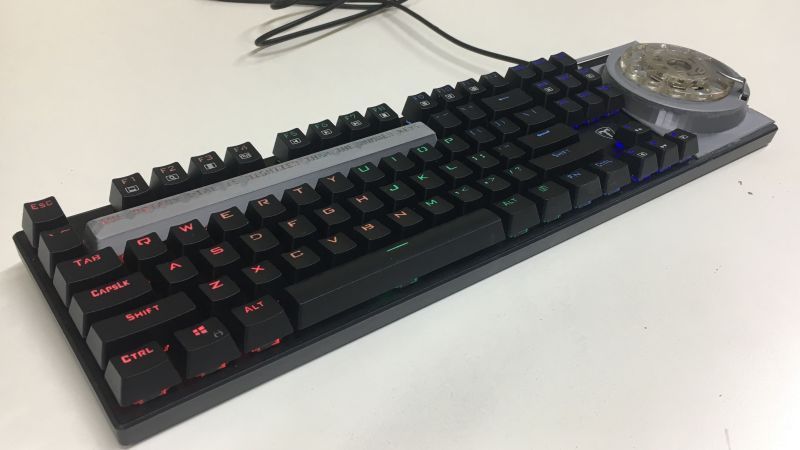We’re not sure about the rest of you, but to us, a keyboard without a number pad all the way over to the right just seems kind of — naked? We might not be accountants, but there’s something comforting about having the keypad right there, ready for those few occasions when you need to enter numbers more rapidly than would be possible with the row of number keys along the top of the keyboard.
What we are sure about, though, is that rapid numeric keying is not what this rotary dial numpad keyboard is all about. In fact, it’s actually an April Fool’s prank [Squidgeefish] played on a retro-phone-obsessed coworker, and it worked out pretty well. Starting with an old telephone dial from what must be an exceptionally well-stocked parts bin, [Squidgeefish] first worked out the electrical aspects of interfacing the dial with a cheapo mechanical keyboard. It turns out that there’s a lot of contact bounce in those old dials, leading to some software hacks to keep the Arduino happy.
There was also a little hackery needed to stuff a USB hub into the keyboard, as well as literal hacking of the keyboard’s PCB. A 3D printed enclosure allows the rotary dial to nestle into the place where the regular numpad would be, and it looks pretty good. We also like forcing the issue by replacing the entire row of number keys with a single massive prank key.
While this was all for fun, there are a couple of cool tips here, like chucking a bit of printer filament in a Dremel tool to stir-weld parts together. And even though we’ve seen that parametric keycap generator before, it is pretty cool to see it in action.















yeah shutup and take my money
The next logical step is a single rotary dial input and a rotary switch to select between digit, first letter, second letter, third letter, first symbol, second symbol… so you’d literally “dial” your keyboard inputs in one character at a time. Definitely not practical, but would get people talking.
Oh man, that’s awesome. I’ve got a brass rotary dial mechanism in a drawer here that I could totally do this with. I’m sure I can come up with a project that would be improved with this as a kind of steampunk accent for its input.
I’m guessing that in no time the coworkers thought the “rrrrrrrrrrrrrrt….clickclickclickclickclick” of the dial more annoying than the clacking of the mechanical keyboard?
Also: a numpadless keyboard with brown switches, together with a separate numpad on the other side of the mouse with blue switches, is the way to go.
This handles debouncing as well as decoding:
https://github.com/Harvie/RotaryDial
“While one could use a pin-change interrupt, the timescale is so large that busy-waiting is acceptable.” NOOOOOOOO
For some reason this looks rather like the keyboard of an original Rotary Dial TELEX machine.
Oh yes, amd I SO want on of these.
This year, I built a toy for my grandkids for Christmas, using a rotary dial salvaged from a Goodwill find. It has two 7-seg LEDs and a switch to select up or down counting or dialled digit display. In the counting modes, the dialled digit is added or subtracted from the 2-digit number in the display (good for learning math) and the center position of the switch clears the display when the dial is turned and simply counts up as the dial returns, showing the digit dialled.
After 2 minutes without activity, a power saver circuit turns it off. Dial activity turns it back on. All CMOS LSI and MSI logic, and powered by 4xAA cells. I built it into the base of the phone I salvaged it from (one of those faux-French “Decotel” phones). A single PCB, designed in KiCAD. The whole thing cost me more than I want to think about, but if the grandkids like it, it was well worth it. The 4-year old is in her second year of Montessori, and the 2 year old loves anything techy.
I’d like to see this thing, sounds really fun and well thought out.
That would compliment a typewriter style keyboard to make a neat Steampunk set…